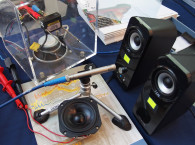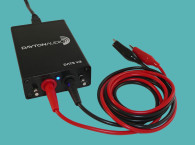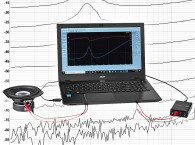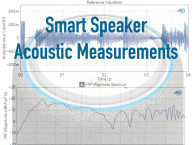Compared to electronic audio test, measuring loudspeakers is complicated. First, to measure sound levels accurately requires precision measurement microphones and supporting electronics, which have a known, stable sensitivity and flat frequency response over the frequency range of interest. Measurements are further complicated by the interaction of the loudspeaker under test with the test environment.
Physical dimensions are also extremely important in acoustics. The audible frequency range is generally considered to be 20 Hz to 20 kHz. The corresponding range of wavelengths of sound in air at room temperature is 17.2 m to 17.2 mm (56 ft to 0.68 in). So, at 20 Hz, a typical loudspeaker is tiny compared to the wavelength of sound, and it behaves like a point source, radiating uniformly in all directions. At 20 kHz, the opposite is true; a typical loudspeaker is large compared to the wavelength and its radiation pattern is radically different in all directions.
Despite the challenges, when recommended procedures are followed using quality test equipment, it is possible to make good, repeatable loudspeaker measurements. Loudspeaker measurements covered in this application note are:
- Frequency response
- Sensitivity
- Input voltage/power
- Impedance & Thiele-Small parameters
- Directivity
- Distortion







